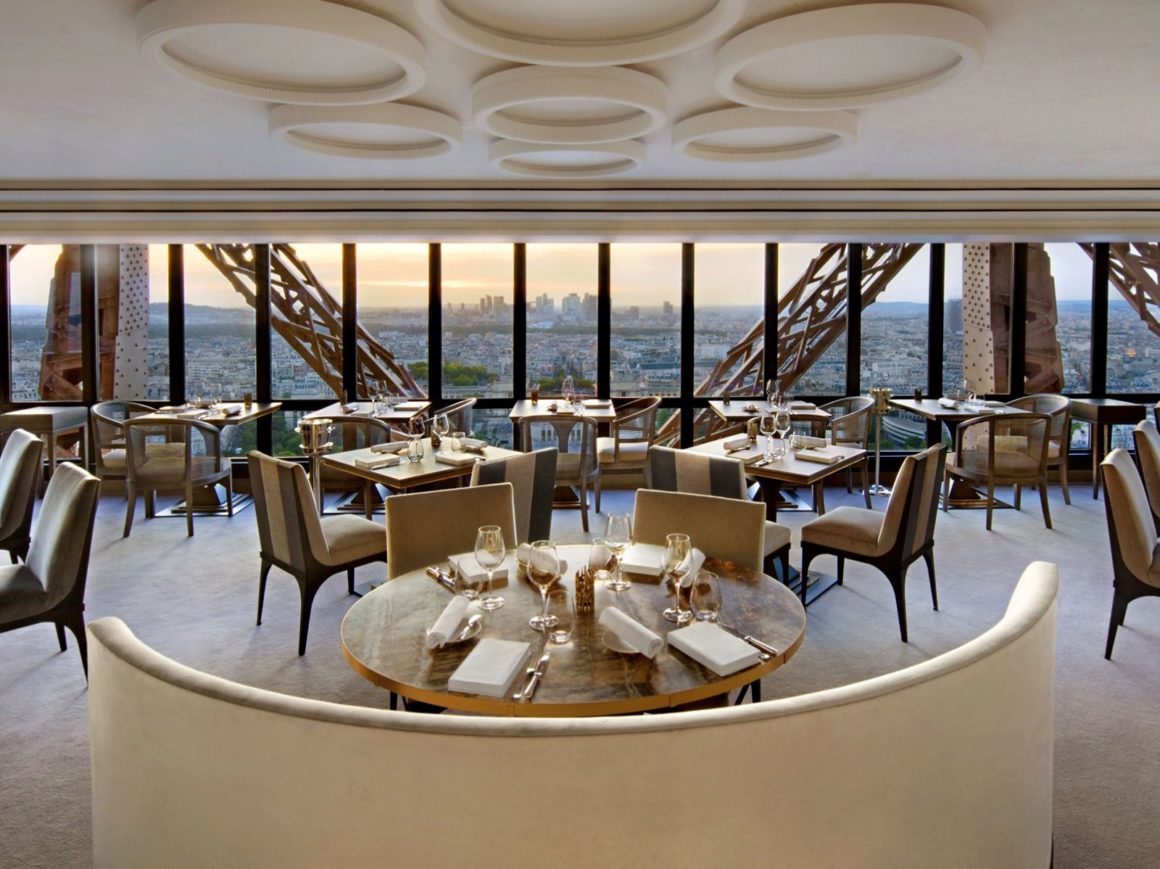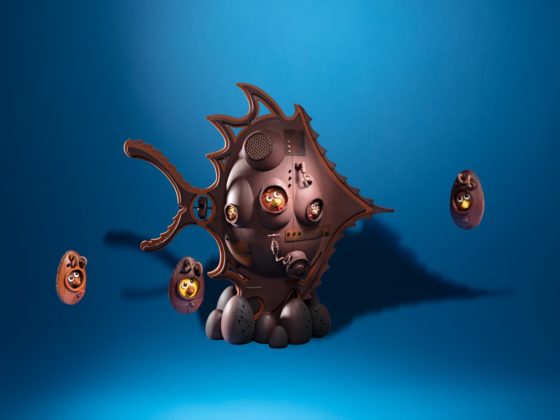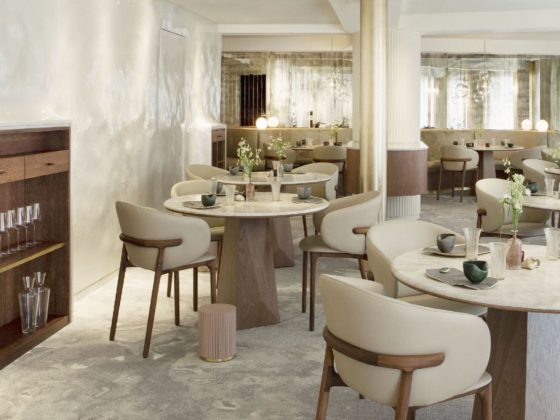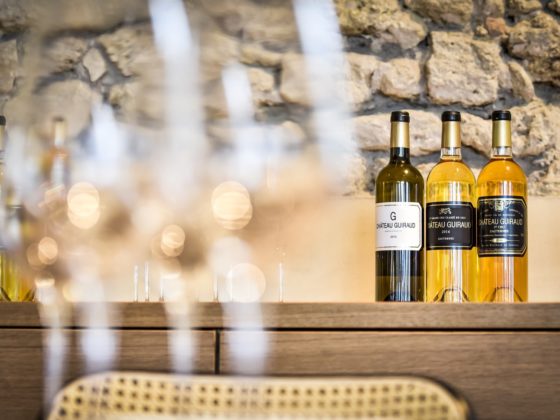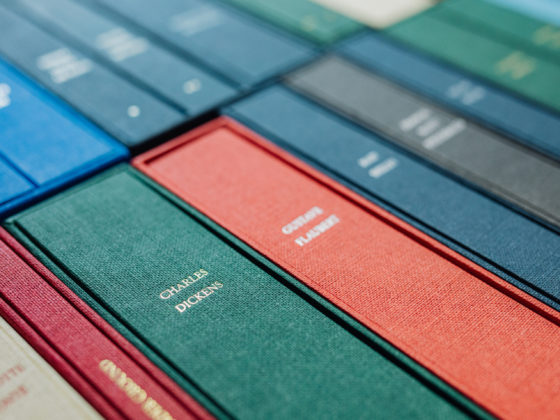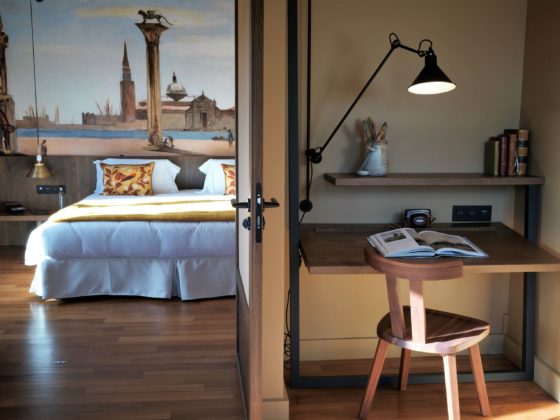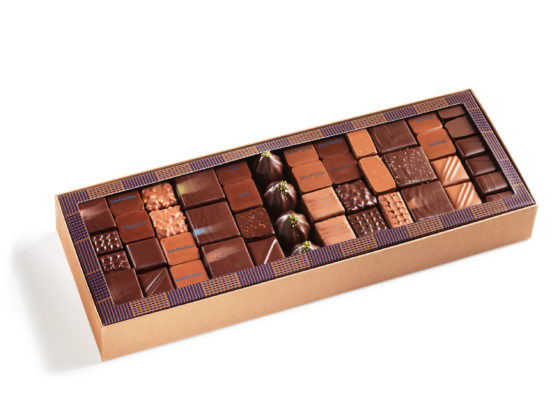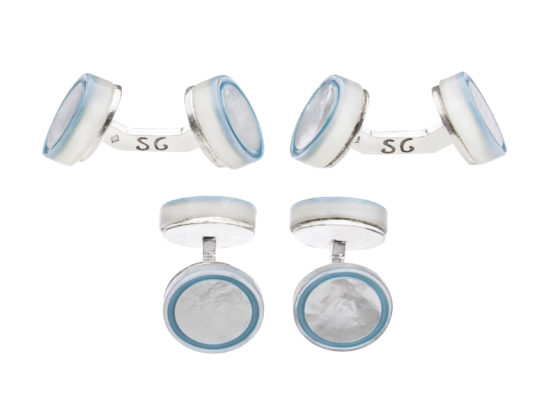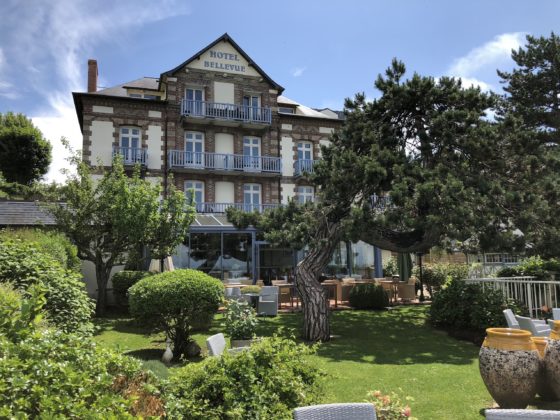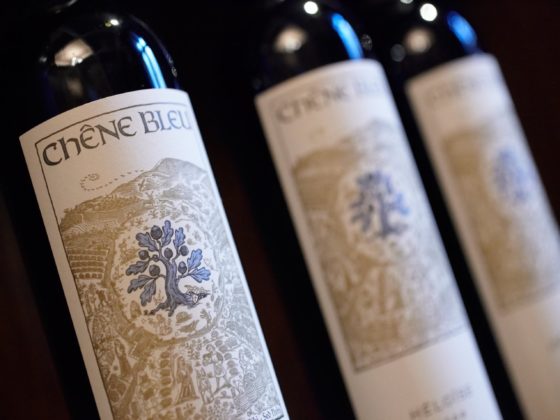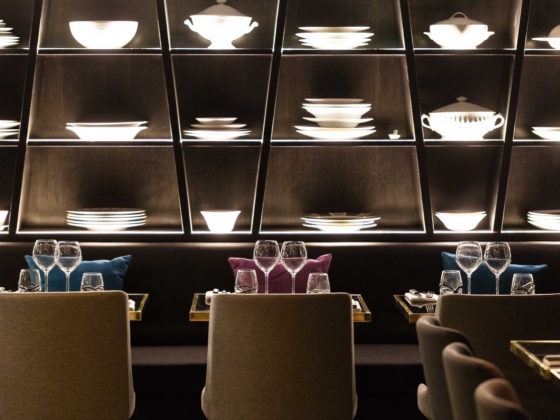Perched 125 meters above the Champs de Mars, on the second floor of the Eiffel Tower, the Jules Verne, recently taken over by Frédéric Anton, is one of the capital’s must-see gastronomic addresses.
As you ascend, through this panoramic elevator grafted to the heart of the south pillar of the Eiffel Tower, the experience crescendos and the awareness grows: Rare are the restaurants that benefit from a setting as exceptional as the Jules Verne! In a few moments, we are on the second floor of the Iron Lady, where the establishment remains perched, at 125 meters above the Champs de Mars.
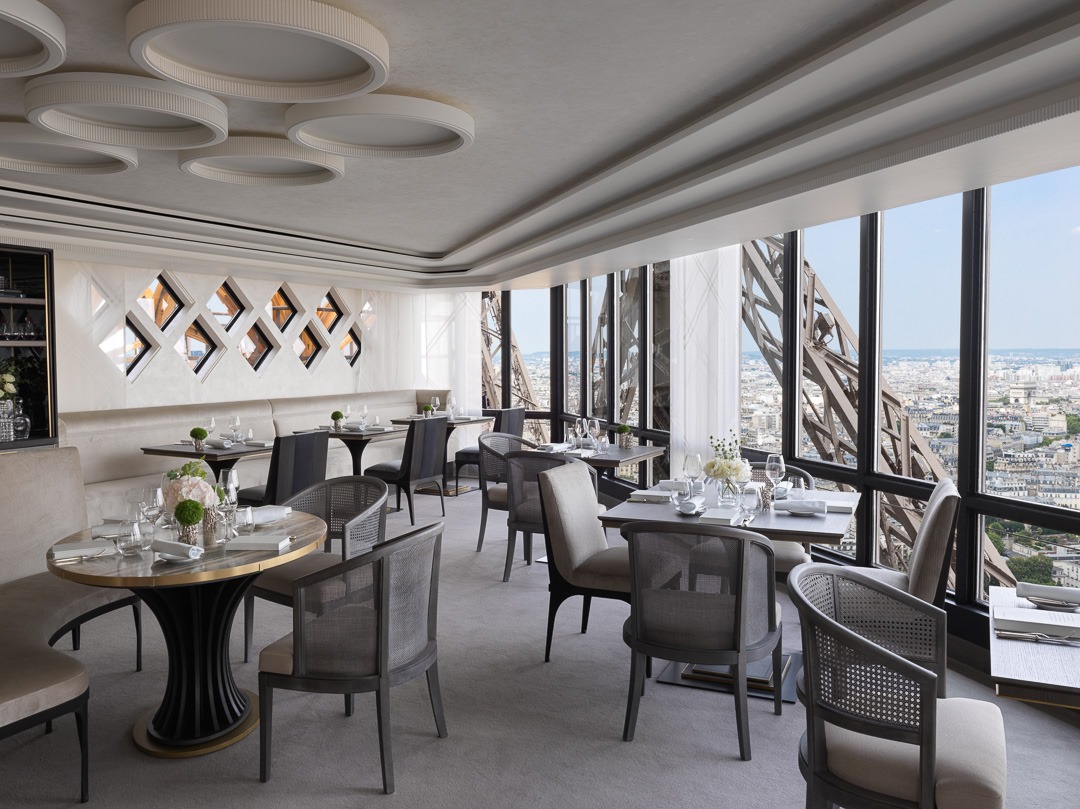
This is where Frédéric Anton, Meilleur ouvrier de France and three-star chef at the Pré Catelan, settled down after ten years of Alain Ducasse’s reign. For the past few months, a brand new setting has been welcoming guests for a unique experience. The chef called on the architect Aline Asmar from Amman, who in six months set out to invent a place that links the aesthetics of the early 20th century with the timeless modernity of French chic : The elegance and softness of the taupe colors rub shoulders with the raw materials and graphic shapes, which are not without ties to the legendary Iron Lady.
Divided into two rooms, the Jules Verne obviously benefits from a rare luminosity, and, through the large bay windows, offers a unique view of Paris and its surroundings. From Sacré-Coeur de Montmartre to the Montparnasse tower, via the Louvre, the Russian cathedral and the Invalides: nothing escapes the panorama.
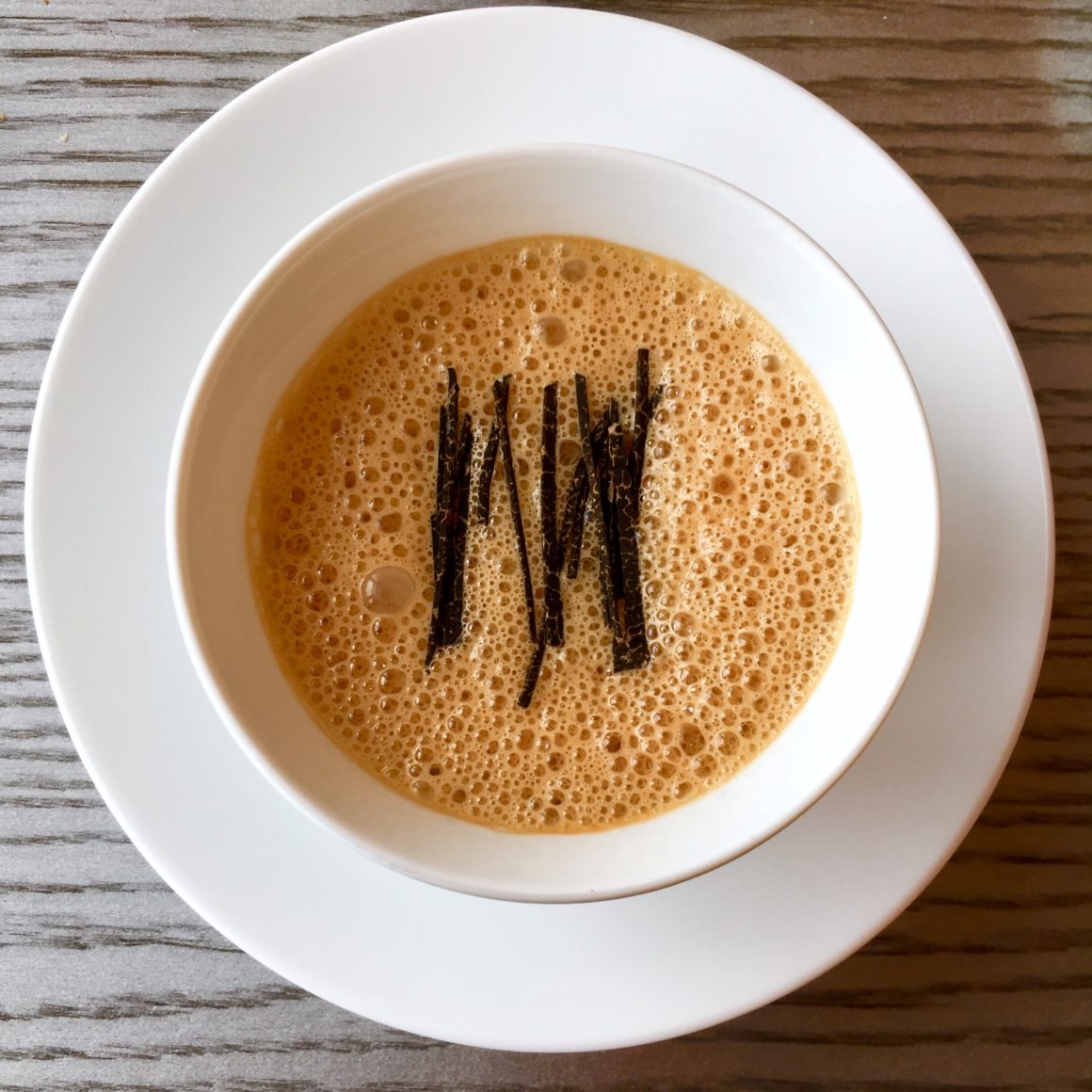
In the kitchen, Frédéric Anton, who is present every day behind the stove, relies on the young Kevin Garcia, already present at his side at the Pré Catelan, to execute a beautiful, largely contemporary menu with great precision. This creative cuisine, as is the case at the Pré Catelan, is closely linked to his graphic research which, here, intends to evoke the architecture of the Eiffel Tower: the cogs, the nuts, the chiseling… The approach is ambitious but the result is coherent. No wonder a Michelin star arrived in 2020, shortly after opening.
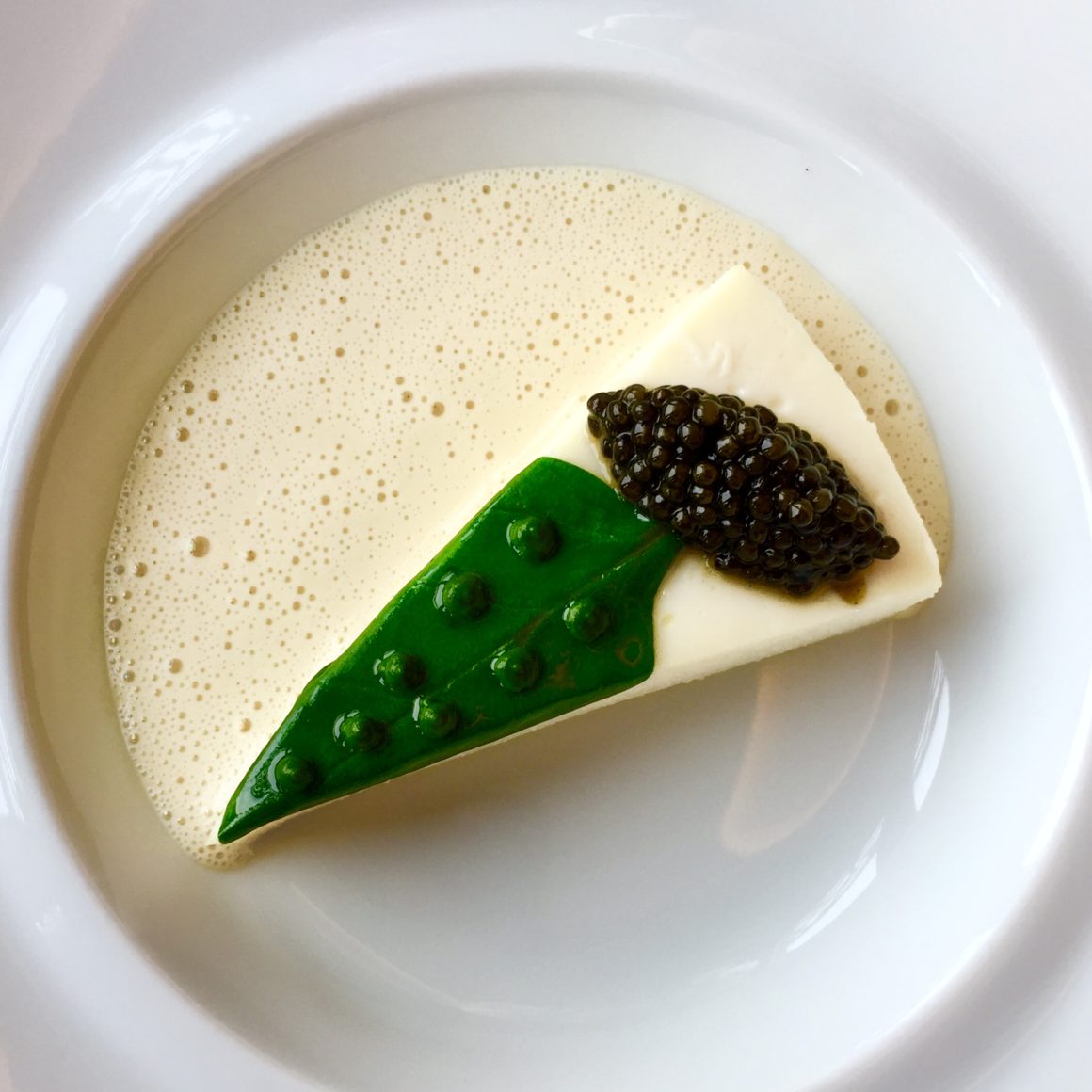
The tasting menu, in five or seven parts, offers a rather exhaustive panorama of the magnificent work of the brigade. The foie gras in a soft flan with Nantua sauce is superb; the reworked scallops with lime and caviar are brilliant; the langoustine in ravioli with celery cream and black truffle – one of the chef’s signatures at the Jules Verne – is incredible; the roast venison with macaroni gratin is also up to scratch. The cod, alas, marred this high-flying succession: the cooking was just right and the piece well done, but the bottarga and the spicy juice seemed ill-suited to this fish.
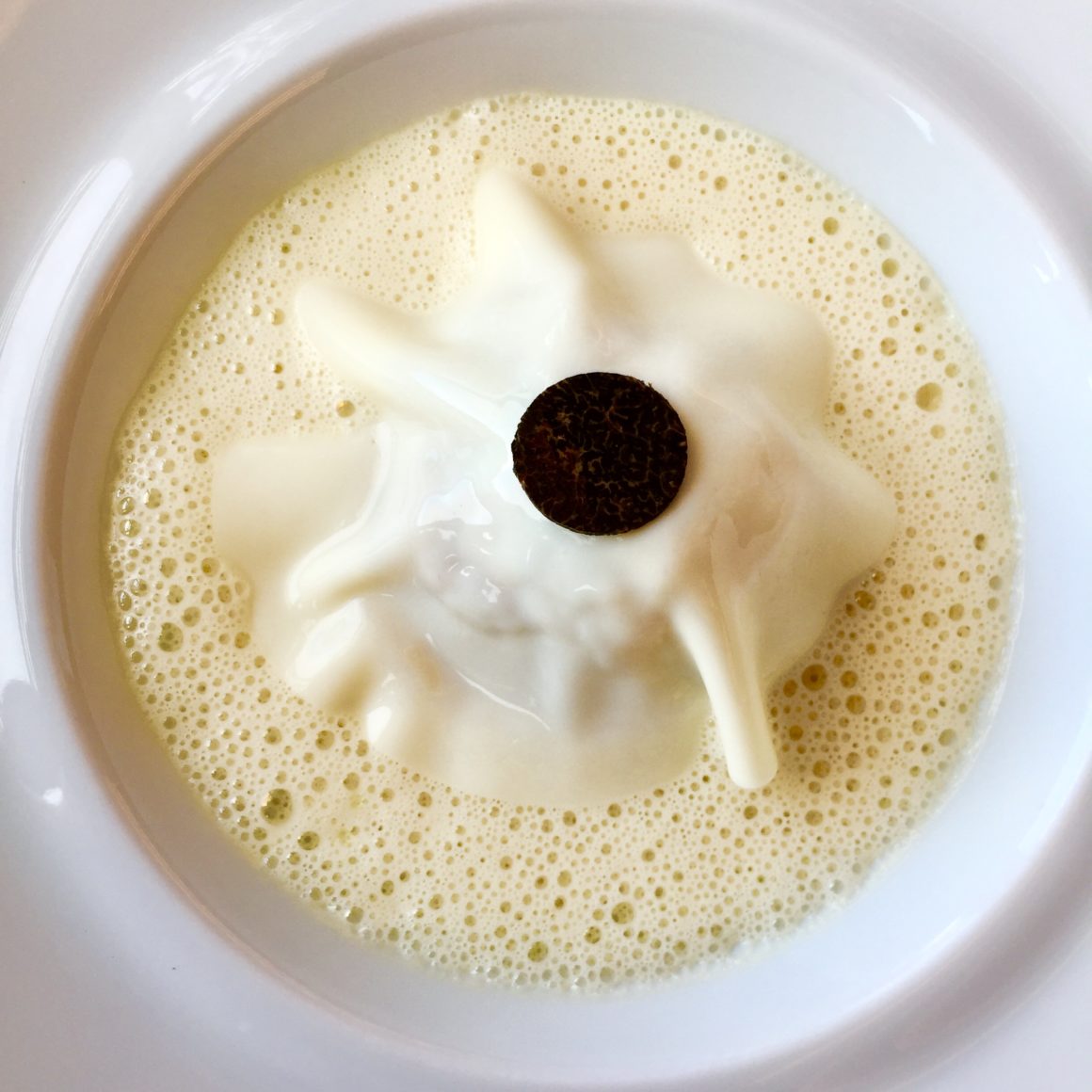
Generally speaking, we are not particularly fond of the food and wine pairings proposed in gastronomic restaurants, but we have to admit that here, Benjamin Roffet, also Meilleur ouvrier de France, does a very good job despite the constraints imposed by the location: 800 bottles can be stored in the restaurant, the others (about 10,000) resting somewhere under the Champs de Mars, which means that ordering an exceptional vintage requires a round trip of about half an hour. It is also that, a parenthesis out of time…


